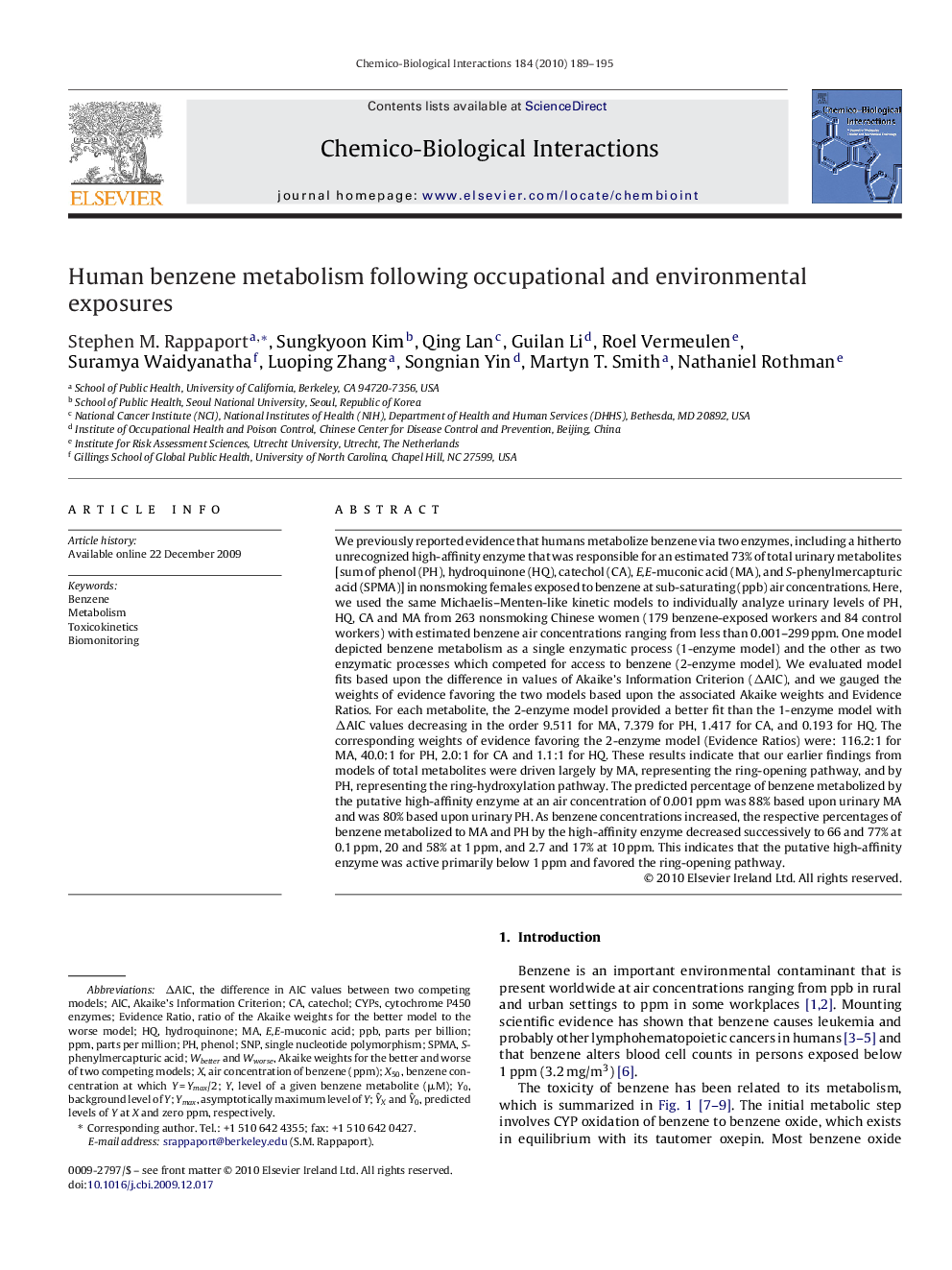| کد مقاله | کد نشریه | سال انتشار | مقاله انگلیسی | نسخه تمام متن |
|---|---|---|---|---|
| 2581147 | 1561647 | 2010 | 7 صفحه PDF | دانلود رایگان |

We previously reported evidence that humans metabolize benzene via two enzymes, including a hitherto unrecognized high-affinity enzyme that was responsible for an estimated 73% of total urinary metabolites [sum of phenol (PH), hydroquinone (HQ), catechol (CA), E,E-muconic acid (MA), and S-phenylmercapturic acid (SPMA)] in nonsmoking females exposed to benzene at sub-saturating (ppb) air concentrations. Here, we used the same Michaelis–Menten-like kinetic models to individually analyze urinary levels of PH, HQ, CA and MA from 263 nonsmoking Chinese women (179 benzene-exposed workers and 84 control workers) with estimated benzene air concentrations ranging from less than 0.001–299 ppm. One model depicted benzene metabolism as a single enzymatic process (1-enzyme model) and the other as two enzymatic processes which competed for access to benzene (2-enzyme model). We evaluated model fits based upon the difference in values of Akaike's Information Criterion (ΔAIC), and we gauged the weights of evidence favoring the two models based upon the associated Akaike weights and Evidence Ratios. For each metabolite, the 2-enzyme model provided a better fit than the 1-enzyme model with ΔAIC values decreasing in the order 9.511 for MA, 7.379 for PH, 1.417 for CA, and 0.193 for HQ. The corresponding weights of evidence favoring the 2-enzyme model (Evidence Ratios) were: 116.2:1 for MA, 40.0:1 for PH, 2.0:1 for CA and 1.1:1 for HQ. These results indicate that our earlier findings from models of total metabolites were driven largely by MA, representing the ring-opening pathway, and by PH, representing the ring-hydroxylation pathway. The predicted percentage of benzene metabolized by the putative high-affinity enzyme at an air concentration of 0.001 ppm was 88% based upon urinary MA and was 80% based upon urinary PH. As benzene concentrations increased, the respective percentages of benzene metabolized to MA and PH by the high-affinity enzyme decreased successively to 66 and 77% at 0.1 ppm, 20 and 58% at 1 ppm, and 2.7 and 17% at 10 ppm. This indicates that the putative high-affinity enzyme was active primarily below 1 ppm and favored the ring-opening pathway.
Journal: Chemico-Biological Interactions - Volume 184, Issues 1–2, 19 March 2010, Pages 189–195